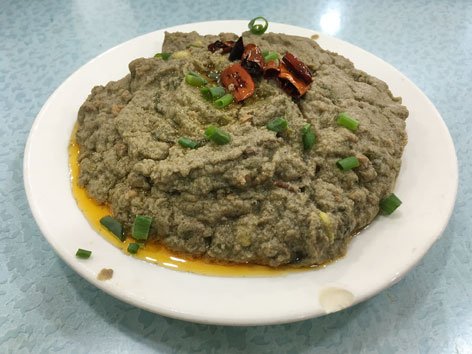Ethiopian Chicken Stew (Doro Wett)
Ethiopia
amantour
guides you to the best local dishes & drinks in
125+ cities. See map now



.jpg) Going somewhere and wish you could take all of a city’s Eat Your World info with you? With EYW’s Kindle and City Guides, you can! Don’t miss out on any local foods or drinks during your next trip.
Going somewhere and wish you could take all of a city’s Eat Your World info with you? With EYW’s Kindle and City Guides, you can! Don’t miss out on any local foods or drinks during your next trip.
EYW wants your food photos!

EYW wants your food stories!
Hey guys I am a traveler who loves to explore different places around the world. I often visit outside of Canada, So whenever I have to travel around the world I always book my flight tickets from the... Read more

What: Bear with us for this one: Yes, madoufu may look like a pile of slightly green cement. Yes, we know that madoufu comes from the mashed and fried fermented mung-bean dregs left over from making douzhi. But take a deep breath, take a bite (we won’t blame you if you close your eyes), and you’ll be glad you did. Despite its unappealing first impression, madoufu is basically Beijing hummus, and it’s just as addictive as its distant Middle Eastern cousin. While it’s gone through the same fermenting process as douzhi, it has only a touch of douzhi’s sourness and none of its off-putting smell. Instead, madoufu carries hints of a flavor that reminds us of olive oil, with a little kick from the chili peppers sprinkled on top. Vegetarians be warned: Madoufu is typically fried in animal fat (typically lamb fat in halal restaurants, pork fat in others).
It’s usually served hot, but Chinese traditional medicine considers it a “cooling” food, making it a popular dish in the sweltering summer months. Many locals also claim madoufu is a surefire way to sober up after a long night of drinking.
Where: Our madoufu is from Bai Kui (白魁, 158 Jiaodaokou Nan Dajie, 交道口南大街158号, map), a casual eatery a few blocks away from the ancient Drum Tower. The Arabic calligraphy above the door is a reminder once again that while not all of Beijing’s traditional dishes originated from the Muslim Hui people, their community has done a formidable job of keeping the city’s culinary history alive.
When: Daily, 6am-8pm
Order: A plate of madoufu costs 15 RMB here. No matter how stellar your chopsticks skills may be, we think you’re better off going at it with a spoon—that’s what the locals do, after all. Madoufu isn’t a standalone meal, but makes a good accompaniment to a well-rounded lunch or dinner. We’d suggest something a bit lighter, like a plate of stir-fried spinach (qing chao bo cai, 清炒菠菜), as well as a plate of Bai Kui’s signature beef-stuffed “doornail dumplings” (men ding rou bing, 门钉肉饼).
Alternatively: Another good Hui Muslim place offering madoufu, as well as a lakeside location perfect for an after-dinner stroll, is Li Ji (李记, 19 Ya’er Hutong, 鸦儿胡同19号, map). You can even get madoufu conveniently prepackaged to go at Huguosi Xiaochi (护国寺小吃, 214 Dongsi Bei Dajie 东四北大街214号, map).
©2025 Eat Your World, LLC - All Rights Reserved